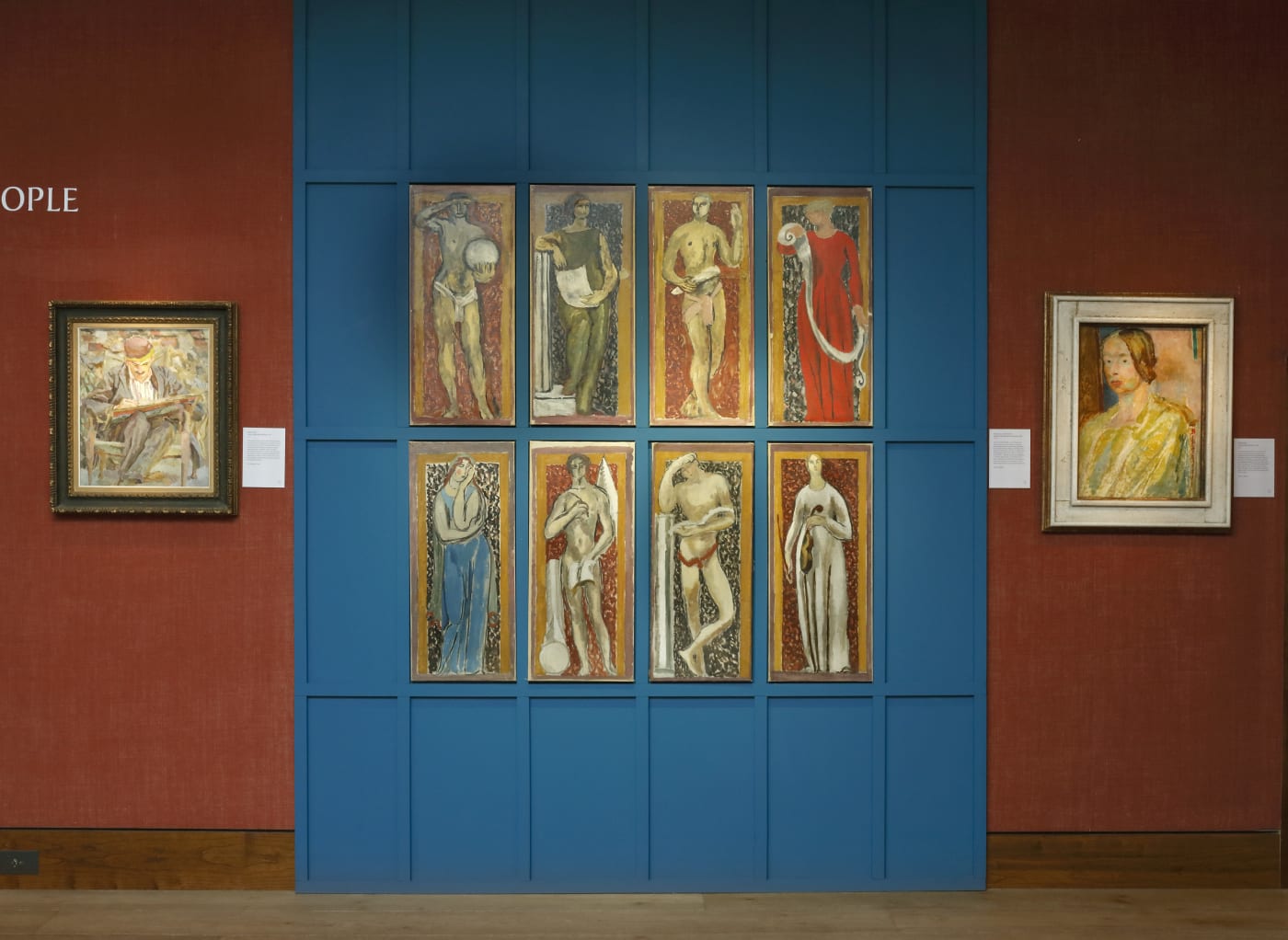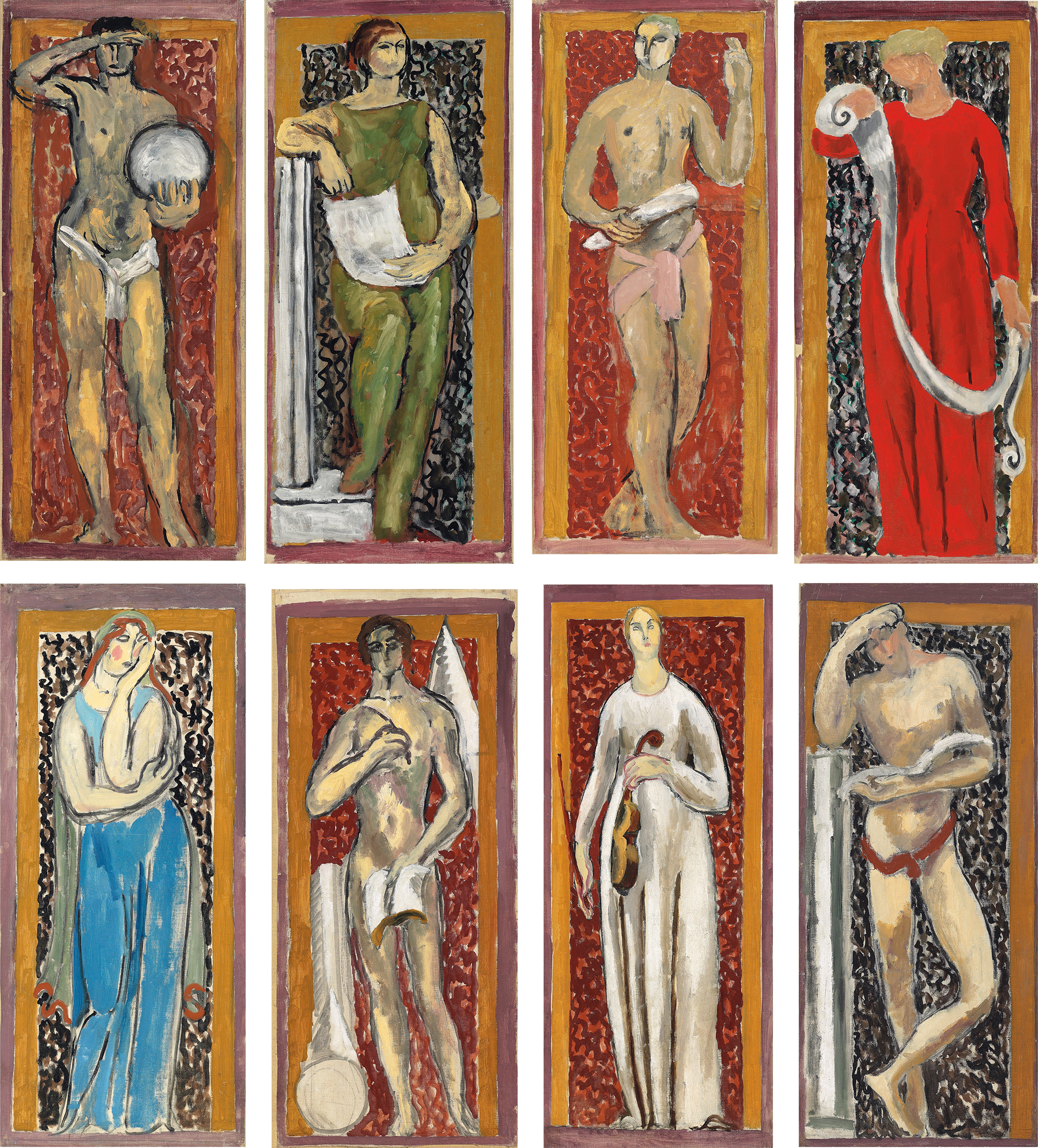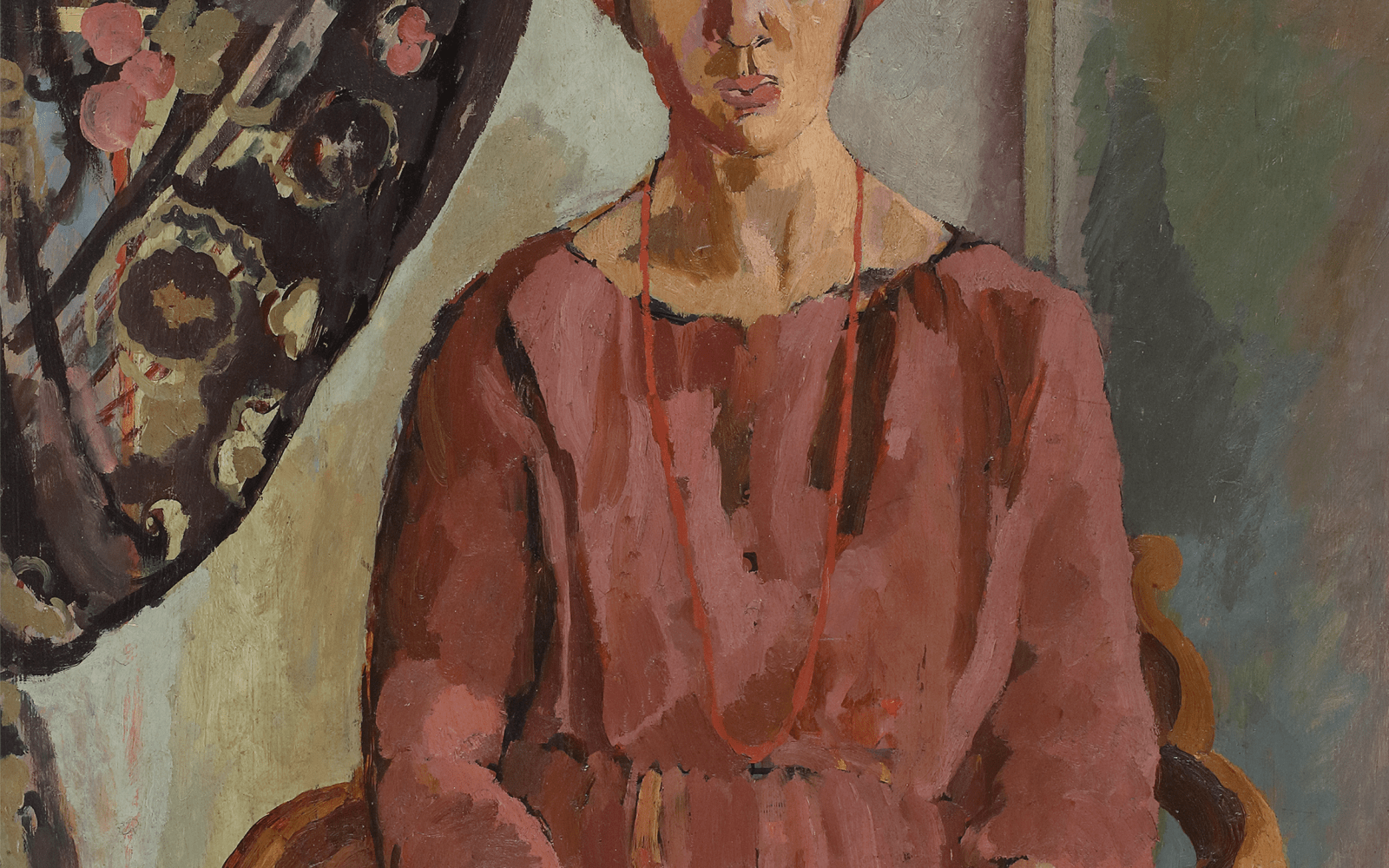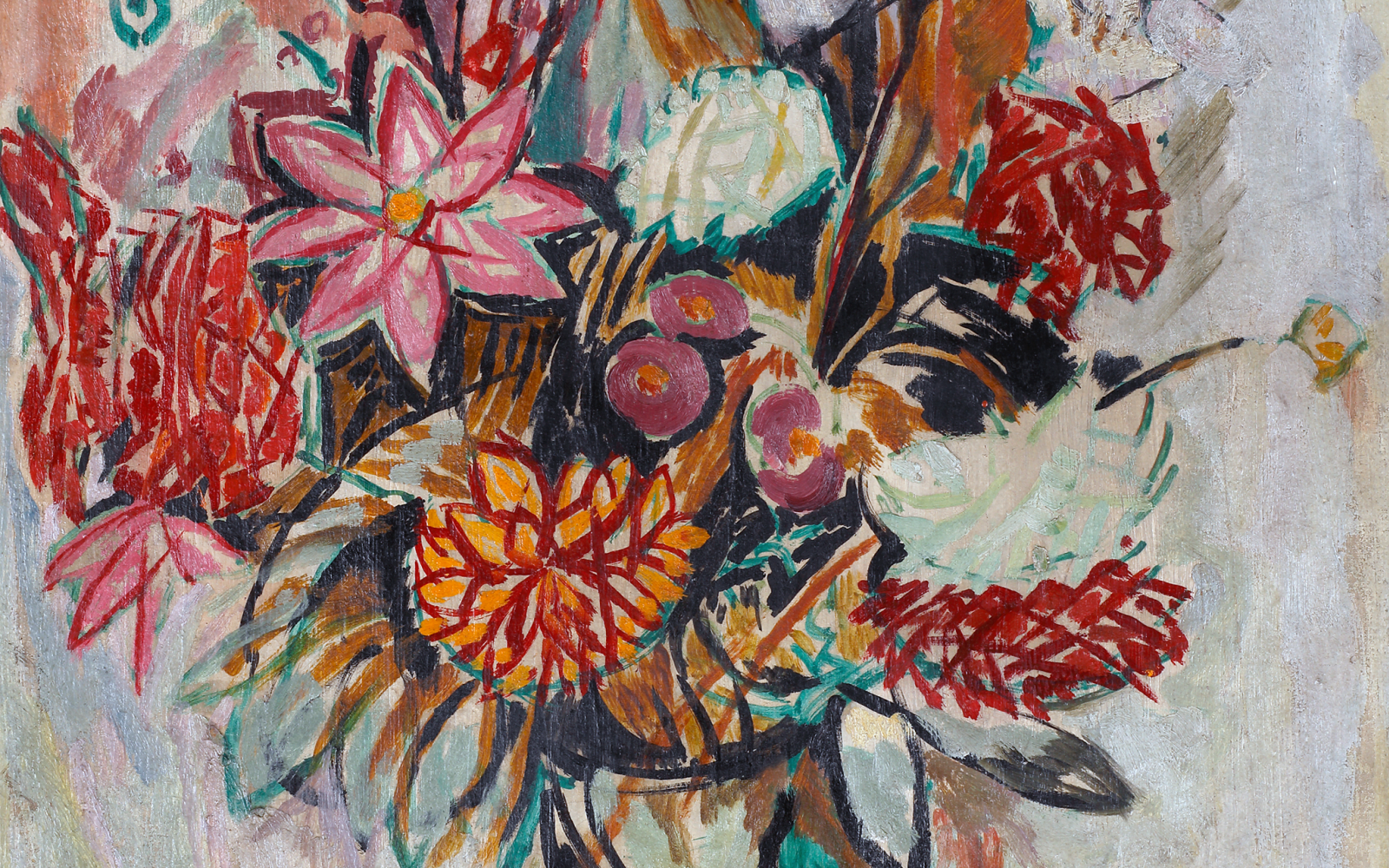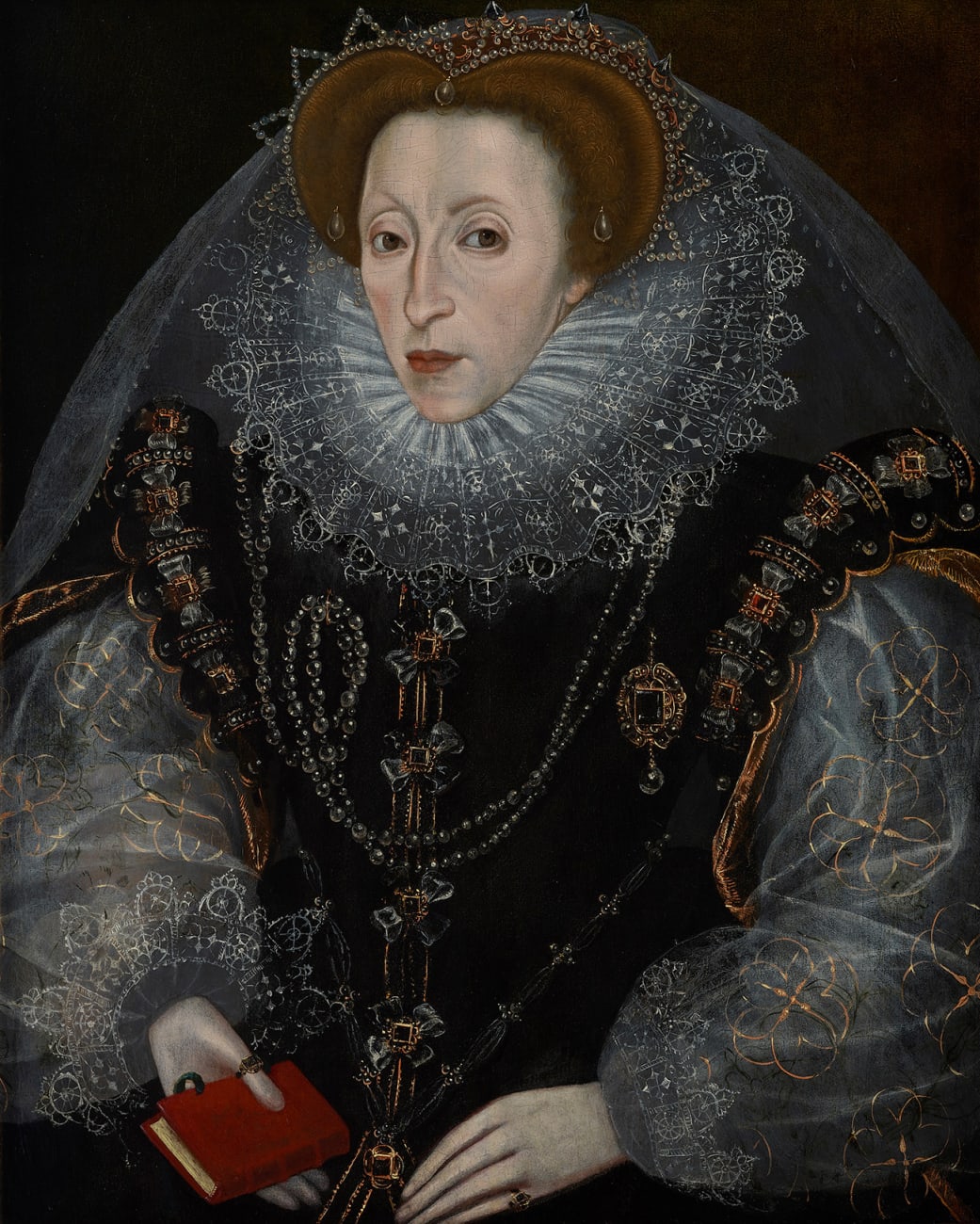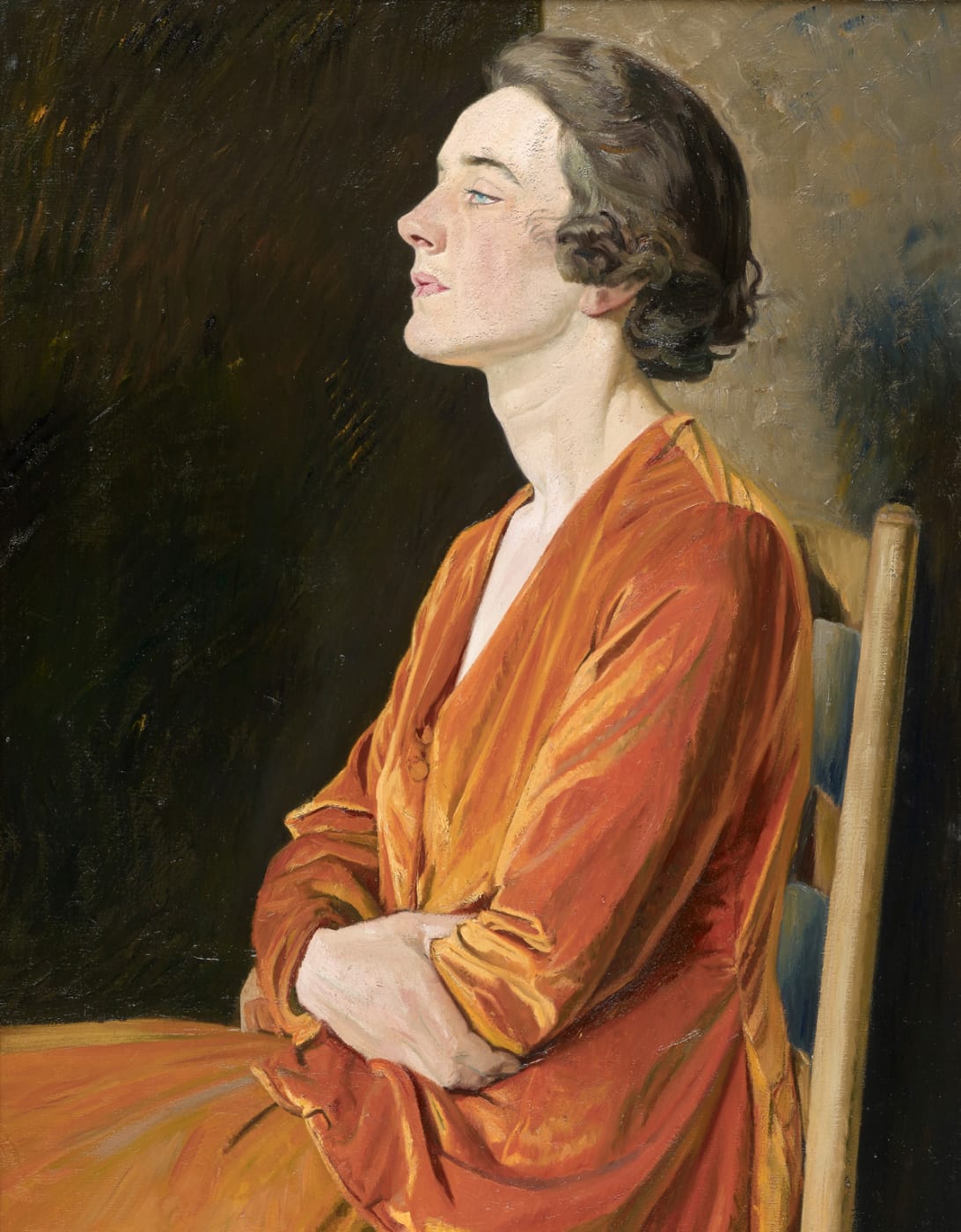Sing me, o muse
Vanessa Bell annd Duncan Grant's Muses | Country Life Magazine
Vanessa Bell annd Duncan Grant turned classical deities into a burst of colour and form that kindled Philip Mould’s passion for the Bloomsbury Group, finds Carla Passino.
THIS is a story about love, art, genius and triangles. It centres on eight figures of the Muses painted by Bloomsbury Group luminaries Vanessa Bell and Duncan Grant, but don’t tax your eyes to examine the geometry of the pictures. ‘As American writer Dorothy Parker famously said, the Bloomsbury Group lived in squares, painted in circles and loved in triangles,’ notes art dealer and Fake or Fortune? presenter Philip Mould, who owns the studies for The Muses of Arts and Sciences, ‘and there is a triangle to these figures because they were a mural set painted for the Cambridge rooms of John Maynard Keynes, who was a lover of Duncan Grant’s. Mind you, it was a broad field.’
Bell also was Grant’s lover, but this did not seem to strain the relationship between the three friends: they had recently been on holiday to Italy together when Keynes asked the two artists to paint him the mural. ‘For one of the most intelligent people in the country, Bell and Grant effectively created a visual manifestation of his inspiration, presenting how the father of economics could be seen to be looking for new, creative ideas through the various Muses.’
Keynes, explains Mr Mould, commissioned the two artists as a duo and they sometimes painted together: ‘It shows the fused, cohesive nature of the Bloomsbury Group, how they lived intently together.’ The economist had had a good turn in the market and, with the First World War over, this allowed him, Bell and Grant the means and the freedom to tour wartorn Italy. The Muses, notes Mr Mould, are partly a response to that experience: ‘They are an exquisite coming together of many of the elements that make Grant and Bell so experimentally exciting as artists. You have the influence of Renaissance art with a touch of the Pre-Raphaelites and, in the strong, slightly Fauvist colours and the striking primitivist characterisation of some of the faces, you have both artists rejoicing at the opportunities that Modernism gave them.’
The Muses—surprisingly numbering eight, against the nine of classical Greece, and, in another departure from mythology, evenly split between male and female—came to life in a small studio at Charleston, in Firle, East Sussex, the artists’ farmhouse retreat. ‘What became clear to me over time was how the division of creative labour worked: Grant chose to do his Muses as men and Bell as women. Although they were deferring to tradition in subject matter, these are artists ploughing a new furrow—there is a fizzing sense of liberation about them, modernising the classical concept, pushing the boundaries, bolstered by their close friend Roger Fry’s introduction of the avant-garde to Britain via two exhibitions a decade earlier that featured works by Matisse, Cézanne and van Gogh.’
Thus, the studies are a record of a seminal time in modern British art—but also make for an entertaining game when Mr Mould and his wife, Catherine, have guests. ‘We sometimes get people to try and guess which Muse is which—an inherently impossible task given that the artists didn’t really care.’ When the paintings are not on loan for exhibitions (currently at the MK Gallery), they tower above the fireplace—each is about 33in long —and fill the Moulds’ sitting room with colour and energy. This in itself would be enough to cherish them, but Mr Mould has one more reason: ‘These paintings are what got us into Bloomsbury,’ he recalls. ‘My wife and I constantly debate about what she wants to keep at home, what I want and what gets sold at the gallery, so there’s always an arm wrestle. This time, she was the keen one: I had had some profitable transactions, so she encouraged me to celebrate by buying the studies when they came up at auction about 12 years ago. I wasn’t really into Bloomsbury then, but I did what she told me—I could see the point.
‘We brought them home and interior artist Nigel Crawley painted a blue border on the wall around them, evocative of the decorative painting at Charleston. Now, they are totally integrated into the room and ruthlessly set the agenda. The cushions, the chairs, the other paintings all pay homage to their jangling exuberance. That way, my wife has made sure that we keep them: people have sought to buy them, but we would have to dismantle the whole room.’ Clever Mrs Mould.
